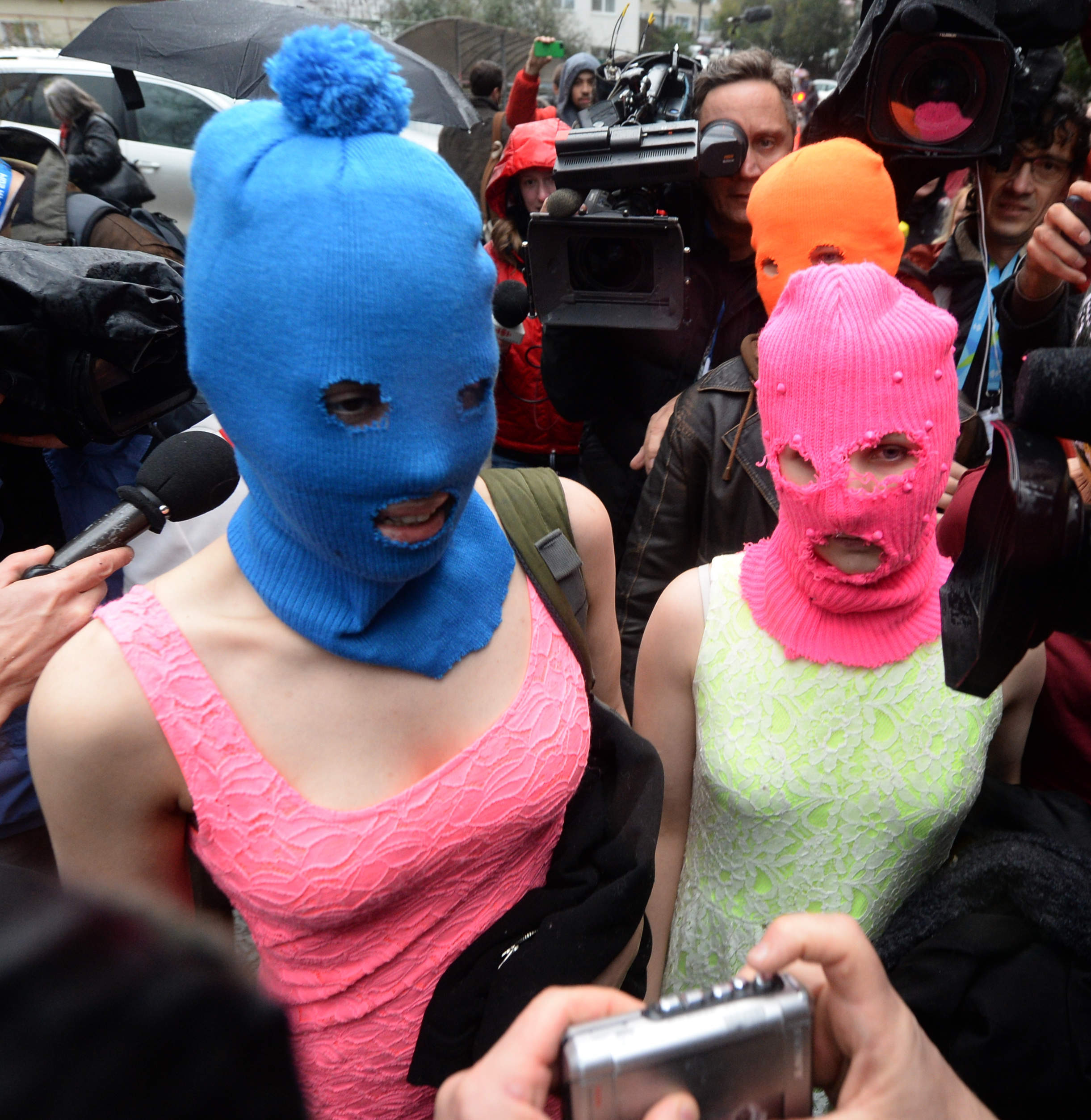
On 21 February 2012, five brightly-dressed members of Russian feminist punk collective Pussy Riot took to the altar of Moscow’s Cathedral of Christ the Saviour to protest links between the Russian Orthodox Church and its “chief saint” Russian President Vladimir Putin. “Virgin birth-giver of God, drive away Putin!” they shouted from beneath now-iconic balaclavas.
The “Punk Prayer” was both a political statement and a powerful feminist message. Six months later, a judge sentenced three of the girls to two years in prison (one was rapidly released) on a conspicuously apolitical conviction of “hooliganism motivated by religious hatred”.
These past five years, Russia’s involvement in crises in Syria and Ukraine has cast a dark shadow over relations with an increasingly cleaved-off West. The year 2015 saw opposition politician Boris Nemtsov murdered some 500 metres from the Kremlin walls.
Domestically, society has constricted people challenging the political status quo. However, low-key initiatives retain traction.
“Artists are simply silent,” says Russian curator and gallerist Marat Guelman, who left for Montenegro in early 2015. “It is better not to say anything about politics, it is better to bypass these issues.”
This is a major difference from five years ago. “Despite persecution against Pussy Riot, people were not afraid to defend them,” he says. “It was a better time.”
There are three topics artists and curators now avoid, says artist and feminist activist Mikaela. One is “homosexuality . . . especially if it involves adolescents”, she says, citing a 2015 exhibit about LGBT teens called “Be Yourself”. Authorities closed it and interrogated the galley owner. “Then the war in Ukraine,” she says. “Russian Orthodoxy is the third topic you cannot tackle.”
Marianna Muravyeva, a law professor at Moscow’s Higher School of Economics, says that aside from the government completely discarding human rights rhetoric, the most significant legal change is the “gay propaganda” law and “legislation against those who insult the feelings of believers”.
The latter came into force in July 2013. Since then, the Orthodox Church has made deeper societal incursions. Muravyeva says that the secular nature of the Soviet Union led to residual feelings of guilt towards the Church – and now it uses that “capital”.
Mikaela observes a “cultural expansion”, citing a new TV channel, radio station and three new churches in her neighbourhood alone.
Orthodox activist attacks on exhibits have increased. In August 2015, they targeted an exhibit at one of Moscow’s most prominent art galleries. Its perpetrators were found guilty of “petty hooliganism” and handed a 1,000 rouble fine (£14 by today’s rates).
“Any word written in Old Slavonic lettering is spirituality,” says Guelman. “Any work of art by a modern artist . . . depravity, sin, the impact of the West.”
Similar groups are active across Russia, and galleries err on the side of caution. Perpetrators, while self-organised, believe their actions to be state-sanctioned, says Muravyeva. They are influenced by “the kinds of messages” conveyed by the government.
Nowadays, self-organisation is integral to artistic expression. Mikaela witnessed educational institutions and foreign foundations telling artists “we are with you”, “we know you are smart” but they cannot host political works for fear of closure. Not knowing where the “invisible line” lies foments uncertainty. “It’s self-censorship,” she says.
Dissident artist Petr Pavlensky, notorious for nailing his scrotum to the Red Square in late 2013 (“Fixation”) and setting fire to the doors of the FSB in 2015, advocates personal agency.
“Fixation” was about a sense of helplessness in Russia that must be overcome; he tried to convey the amount of power the castrated have. “Pavlensky says, ‘Look, I have even less than you’,” says Guelman. The artist and his partner Oksana Shalygina are now in France intending to seek asylum after sexual assault accusations.
Some rise to the opportunity, such as Daria Serenko. She rides the Moscow Metro carrying political posters as part of Tikhy Piket or “Silent Protest”. Her 12 February sign depicted a girl with her head in her arms inundated by the comments received if a women alleges rape (“she was probably drunk”, “what was she wearing?”).
However, as a lone individual in a public space, she experienced hostility. “Men, as always, laughed,” she posted on Facebook afterwards. Earlier this month an anonymous group pasted painted plants accompanied by anti-domestic violence messages around Omsk, southwestern Siberia.
Their appearance corresponded with Putin signing legislation on 7 February decriminalising domestic abuse that causes “minor harm”. While it doesn’t specifically mention women, Muravyeva says that the message “women can manage on their own” is a “disaster”.
On 27 January, after Russia’s parliament passed the final draft, pro-Kremlin tabloid Life released a video (“He Beats You Because He Loves You”) showing how to inflict pain without leaving a mark.
Heightened social awareness is aided by online networks. Since “Punk Prayer”, the proportion of people using the internet in Russia has exploded. In 2011, it was 33 per cent, while in 2016 it was 73 per cent, according annual Freedom House reports. Authorities have concurrently exerted stronger controls over it, eg. targeting individual social media users through broadly-worded laws against “extremism”.
Last July, the hashtag #ЯНеБоюсьСказать (“#IamNotAfraidtoSay”) went viral. Women documented experiences of sexual violence. Russian organisation Сёстры (“Sisters”), which helps survivors receive psychological support, receives “250-350” crisis calls annually.
“Over the past year, the number of applications increased,” because of the hashtag, it says. New media platforms Meduza and Wonderzine also emerged as more “socially aware” outlets. Previously “all we had was LiveJournal communities,” Mikaela says.
Bottom-up challenges are partially due to a generational shift. “Nobody bothered before,” says Muravyeva. “Those children who were born after ‘95 . . . they were already born in a very free society – they don’t know what it is to be afraid, they don’t know what it is to be self-censoring, what it is to be really scared of the state.”
Aliide Naylor is a British journalist and former Arts and Ideas Editor of The Moscow Times.





